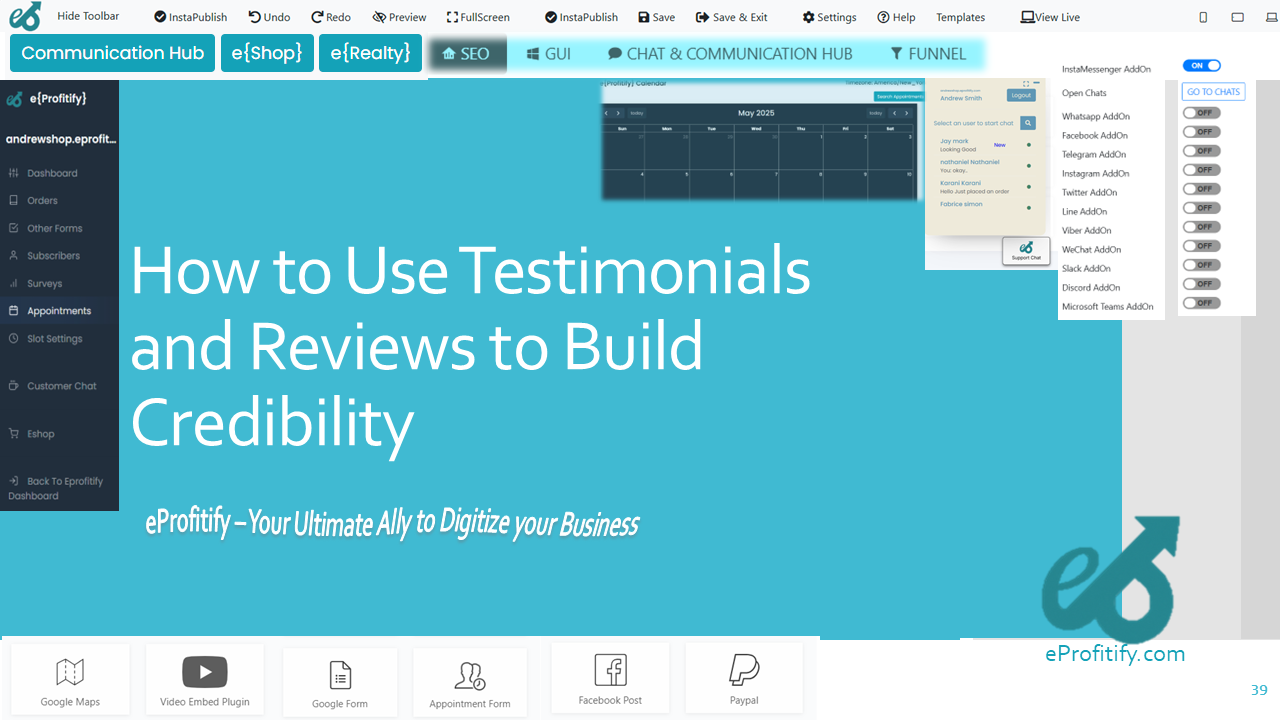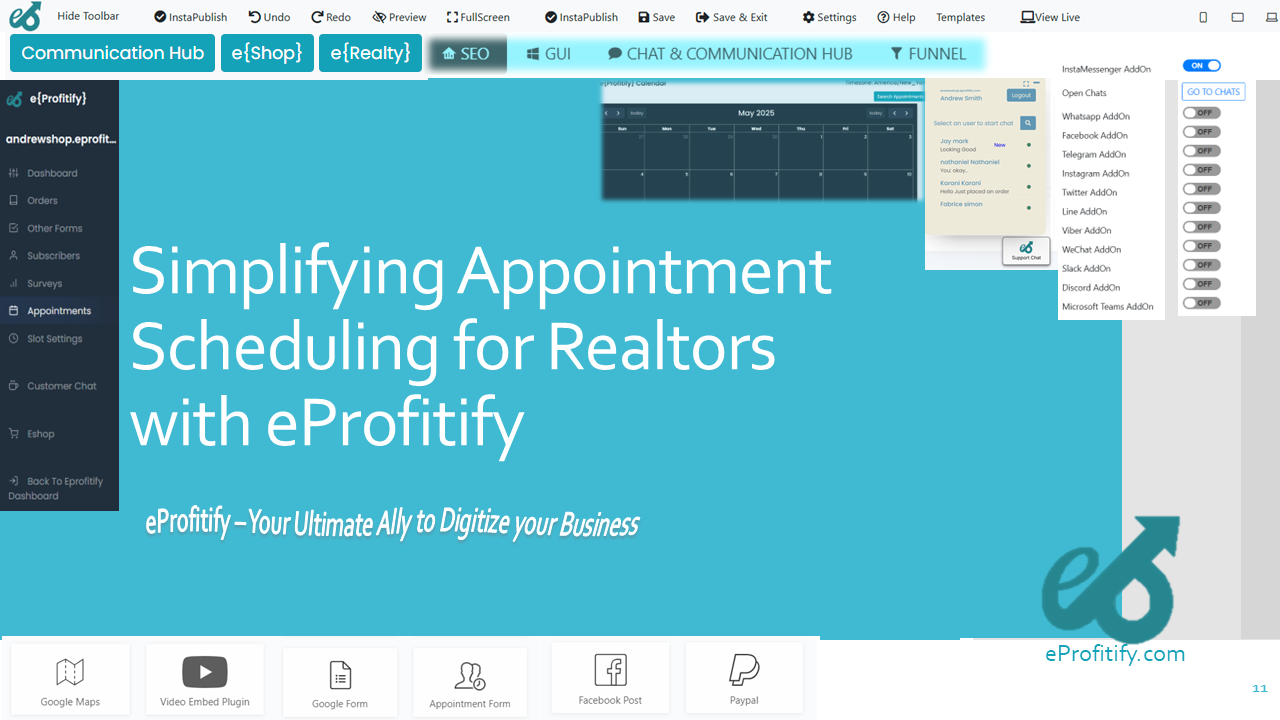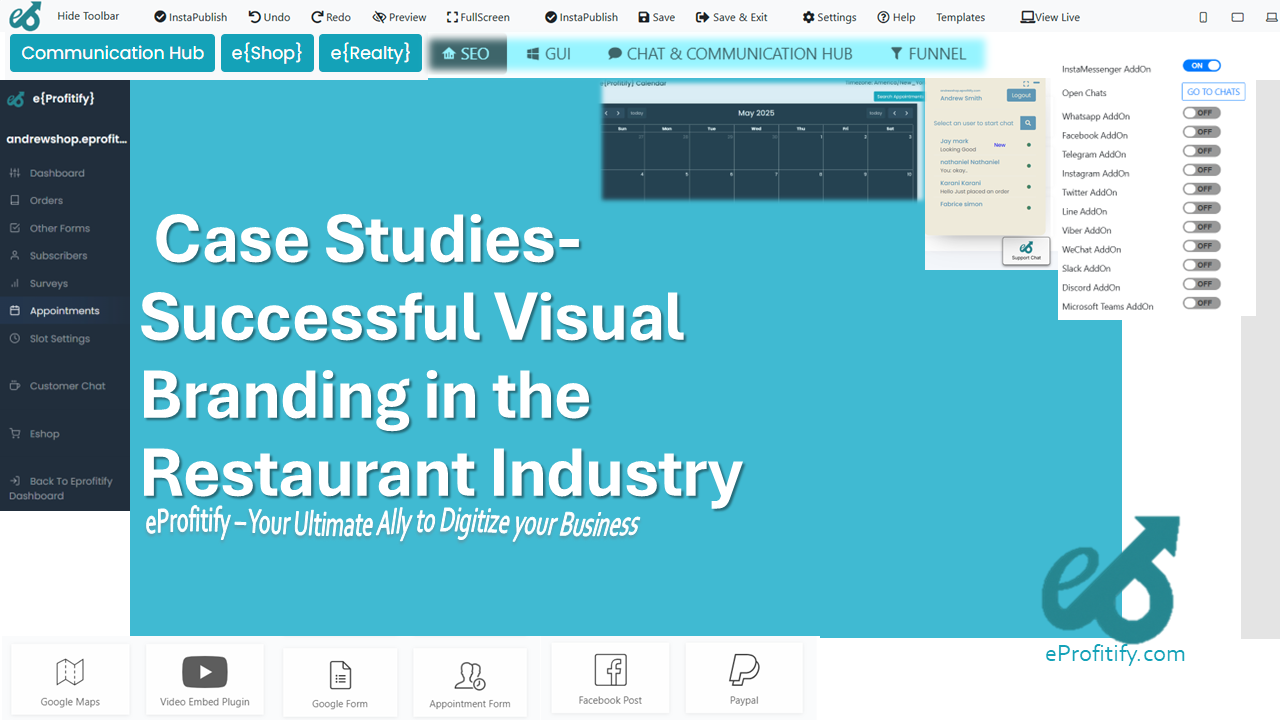How to Use Testimonials and Reviews to Build Credibility

How to Use Testimonials and Reviews to Build Credibility
In today’s digital-first marketplace, credibility is the cornerstone of customer trust. With countless options available at their fingertips, consumers increasingly rely on social proof—like testimonials and reviews—to validate purchasing decisions. According to BrightLocal, 88% of consumers trust online reviews as much as personal recommendations, and 79% read reviews before committing to a purchase (2023). For businesses, leveraging these tools isn’t just beneficial—it’s essential. Platforms like eprofitify, a leading website publishing and management tool, offer integrated solutions to amplify credibility through reviews while streamlining operations. This guide explores how to harness testimonials effectively, backed by statistics, and highlights how eprofitify’s features—such as CRM, ecommerce, instant messaging, and analytics—can elevate your strategy.
1. The Power of Testimonials and Reviews: Why They Matter
Reviews and testimonials bridge the gap between brand promises and customer experiences. They act as unbiased validations of your products or services, reducing perceived risk for potential buyers. Key statistics underscore their impact:
- Displaying reviews can increase conversion rates by up to 270% (Spiegel Research Center).
- 72% of consumers won’t take action until they’ve read reviews (BrightLocal).
- Products with at least five reviews are 270% more likely to be purchased (Spiegel).
These numbers highlight why integrating social proof into your marketing strategy is non-negotiable. Tools like eprofitify simplify this process by centralizing review collection, management, and display across your website and sales channels.
2. Collecting Testimonials and Reviews: Strategies and Tools
a. Automate Review Requests
Post-purchase or post-service follow-ups are critical. Automated emails or SMS prompts increase response rates—businesses using automated systems see a 40% higher collection rate (G2). eprofitify’s CRM and ecommerce integrations enable automated review requests through customizable workflows. For example, after a customer completes a purchase via eprofitify’s ecommerce platform, an automated email can request feedback, linking directly to a review form.
b. Leverage Post-Service Interactions
After appointments or consultations, prompt clients for testimonials. eprofitify’s appointment management system automatically sends follow-up messages, making it easy to request reviews when satisfaction is highest.
c. Use Instant Messaging for Real-Time Feedback
Engage customers post-interaction using eprofitify’s instant messaging feature. A quick chat message like, “How was your experience today?” feels personal and can yield immediate testimonials.
3. Displaying Reviews Effectively: Placement and Presentation
Simply collecting reviews isn’t enough—strategic placement maximizes their impact:
- Homepage Testimonials: 73% of consumers say testimonials make them more likely to trust a brand (Salesforce). Use eprofitify’s drag-and-drop website builder to showcase standout quotes prominently.
- Product Pages: Including reviews here can lift conversions by 58% (Spiegel). eprofitify’s ecommerce tools allow embedding star ratings and customer photos directly on product listings.
- Dedicated Testimonials Page: Aggregate stories and video testimonials to build a narrative.
eprofitify’s widget library offers customizable templates for sliders, grids, and pop-ups, ensuring reviews are visually appealing and mobile-responsive.
4. Leveraging Social Proof Beyond Your Website
Social media amplifies credibility. Share customer reviews on platforms like Instagram or LinkedIn, tagging users (with permission). eprofitify’s social media integrations let you auto-publish testimonials, syncing with scheduling tools for consistent outreach.
User-Generated Content (UGC): Encourage customers to share experiences on their channels. Offer incentives via eprofitify’s loyalty program module for tagging your brand.
5. Addressing Negative Reviews: Turning Criticism into Opportunity
Even negative feedback builds credibility when handled well:
- Respond Promptly: 78% of consumers believe businesses that respond to reviews care (ReviewTrackers). Use eprofitify’s CRM to track and resolve issues swiftly.
- Public Replies: Show accountability by addressing concerns publicly.
- Learn and Improve: Negative patterns? Utilize eprofitify’s analytics to identify trends and refine offerings.
6. Case Studies: Demonstrating Real-World Impact
Case studies transform testimonials into compelling narratives. For instance, a fitness studio using eprofitify’s appointment system could share a story of a client achieving goals through their programs. Highlight metrics like increased retention or revenue.
eprofitify’s analytics dashboard helps quantify success, tracking how testimonials impact traffic and sales.
7. The Role of epofitify: Streamlining Credibility-Building
eprofitify stands out as a holistic platform for credibility management:
- Centralized CRM: Track customer interactions and automate review requests.
- Ecommerce Tools: Embed reviews, automate follow-ups, and manage UGC.
- Instant Messaging & Appointment Systems: Capture feedback in real time.
- Analytics: Measure the ROI of your testimonial strategy.
Conclusion
Testimonials and reviews are indispensable tools for building trust. By automating collection, strategically displaying feedback, and addressing criticism transparently, businesses can convert skeptics into loyal customers. Platforms like eprofitify not only simplify these processes but also enhance operational efficiency through integrated CRM, ecommerce, and analytics. In a world where credibility dictates success, leveraging these strategies—and tools—is the key to growth.
Statistics Sources: BrightLocal (2023), Spiegel Research Center, G2, ReviewTrackers, Salesforce.








